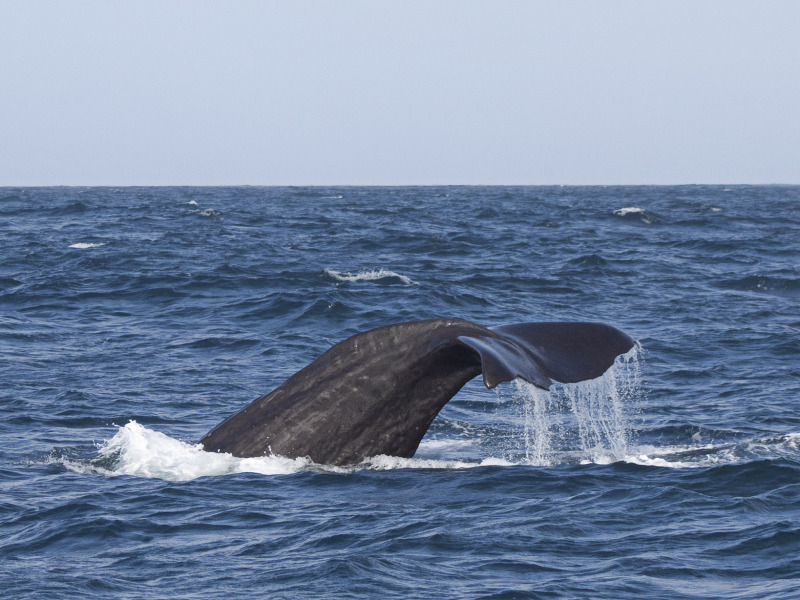Colours
Distinguishing features
The sperm whale's unique body is unlikely to be confused with any other species. The sperm whale's distinctive shape comes from its very large, block-shaped head, which can be one-quarter to one-third of the animal's length. The S-shaped blowhole is located very close to the front of the head and is placed somewhat to the left side. This gives rise to a distinctive bushy, forward-angled spray.
The sperm whale's flukes are triangular and very thick. Proportionally, they are larger than that of any other cetacean, and are very flexible. The whale lifts its flukes high out of the water as it begins a feeding dive. It has a series of ridges on the back's caudal third instead of a dorsal fin. The largest ridge was called the 'hump' by whalers, and can be mistaken for a dorsal fin because of its shape and size.
In contrast to the smooth skin of most large whales, its back skin is usually wrinkly and has been likened to a prune by whale-watching enthusiasts. Albinos have been reported. (Wikipedia)
Size
- Up to 2050 cm (Length of specimen) - applies to Males
- Up to 1600 cm (Length of specimen) - applies to Females
Depth range
- From 0 m to 2000 m
Synonyms
Distribution
Distribution and habitat preferences
Females and young male Sperm Whales are restricted to warmer waters, generally north of approximately 45° S, while older males travel to and from colder waters and to the edge of the Antarctic pack-ice.
Diet
They feed on several species, notably the giant squid, but also the larger colossal squid, octopuses, and diverse fish like demersal rays, but the main part of their diet consists of medium-sized squid. (Wikipedia)







